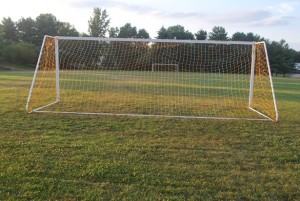Drug Testing And The World Cup
Everyone is talking about the World Cup this month and just like every other time there is a significant world sports event going on there is a large amount of talk about performance enhancing drugs in the news. So here we provide a guide to the common questions about drug abuse and drug testing in World Cup level soccer.
Drug testing for the World Cup is in compliance with WADA policies. The WADA is the World Anti Doping Agency, an independent foundation that was set up in 1999 to fight the increasing presence of drugs in sports. Headquartered in Canada today, WADA is actively involved in drug testing in the World Cup this year.
How does drug testing work in the World Cup?
Earlier this year, FIFA announced a drug testing crackdown. Drug tests were started two months prior to the tournament kick-off and a total of 576 players were to be randomly selected and tested before and during the World Cup. The 32 finalist countries were asked to submit the location details of their teams so that surprise drug testing could be conducted. This was done during the “friendlies” (basically, exhibition games that don’t count toward the tournament) or the training camps.
How common is drug abuse among World Cup players?
The full results of the World Cup drug testing are as yet unknown since 256 of the total 586 drug tests planned are to be done over the course of the tournament. However, over the years FIFA has conducted over 33,000 doping tests with 0.3% yielding positive results. Most of the drug tests that did give positive results tested positive for social drugs such as marijuana and cocaine and not the performance enhancing drugs that would be of higher concern for the sporting authorities. Michel D’Hooghe, FIFA’s medical chief, stated that last year they only had nine cases of anabolic steroids.
There is however, a belief that team sports such as baseball and soccer do not feel the brunt of a drug test as much as individual sports do. It is felt that the high profile sports tend to get away with much more than the individual sports players due to the lack of clout. In fact there are people who believe that there are other forces that govern the positive drug test results of some of the international players in these sports. There is a lot of press and mud is slung in all directions but the dust eventually settles down.
What kinds of drugs are used by players in the World Cup?
While only 0.3% of the drug tests done by FIFA in the last few years have been positive and that too mainly for social drugs, the performance enhancing drugs or anabolic steroids that are known to be used in the sport include lean mass builders, stimulants, painkillers, sedatives and diuretics. The one name that comes to mind when one mentions drugs and soccer is Diego Maradona who was banned from soccer for 15 months after testing positive for cocaine in Italy in 1991. Later he was tested positive for ephedrine in the World Cup in 1994 in the United States too. There are other names like Claudio Cannigian, Christophe Dugarry, Paul Merson, Fernando Couto and more but these names are lesser known.
You can learn more about how to home drug test kits by visiting our homepage.
–Article by Anne Hamilton
Photo “Goals” by Peter Griffin





It’s definitely important to keep healthy these days. With all the bad food people eat, it’s not surprising why the number of heart related fatalities have been increasing.